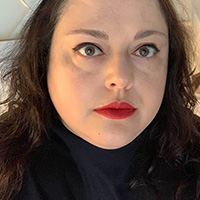In San Francisco’s layered architectural landscape, some projects manage to balance heritage and modernity with heritage Studio Terpeluk Change of Redwood HouseOriginally designed by Albert Lanier in 1974 – the husband of an impressive modernist and famous sculptor Ruth Aswa – residence was already immersed in design importance. Lanier’s signature style, marked by geometry, immersive use of redwood, and a sensitivity to the natural environment, deployed the house as a cool icon of its time. Today, thanks to a imaginative renovation, the house again lives with renewed importance.
The studio Terpeluk’s approach for renewal was neither conservationist in the harsh sense nor a radical overhaul that erased all his character. Instead, the studio adopted the challenge of joining the house architecture DNA, not trying to change it, but to expand it to a contemporary context. His philosophy was simple: only interfere where necessary to reveal the best qualities of the house.
The spatial layout was subtlely but significantly modified. The rooms that once felt compartmental were opened, allowing the light to travel more independently and enable space to enable the visual connection that enhances the spirit of the space. City scenes were implicated, and internal routes were clarified to create a smooth flow between the zone. The result is a habitat that feels both more expanded and more harmonious, without losing the feeling of intimacy.
One of the main attraction of renewal is its content palette – a touch and thoughtful interaction between the old and the new. The center has wood. The original hot redwoods of the house serve as a foundation for interiors. To complement and balance it, the studio Terpeluk introduced the Douglas firing obtained from the East Ghat Piling – a node for stability. These rehearsed elements introduce an additional texture and a living-fertility that complements the original surfaces rather than competing with them.
In other places, the terrazo such as materials, concrete, and respected gray marbles add contrast and depth. These surfaces balance wood-thorough spaces and introduce moments of surprise through their diverse patterns and finish.
The integral part of renewal was the discovery of color and light. Studio Terpeluk collaborated with designer Beatrice SanticiolI To create a color language that develops with architecture. Instead of applying color as a stable overlay, he developed a fine plan that reacts to daylight, volume and change in work. Boulder beans reflect the transition from public to private -with a descending a few to the visitors at the upper level.
A sculpture ladder prepared in black steel combines two levels and creates a dynamic juxtaposition for natural wood. It anchors the interior, draws the eye and strengthens the verticality of the house.
The exterior of the Redwood House plays an important role in the overall experience, and Landscape designer Monica Vayango was listed to resume external locations with similar ideas. Its design starts in the entry courtyard. As visitor proceeds through the property – in the private courtyard and downwards towards the garden – planting plan cure and systematically turns into wild and expressive.
New redistributed aspects, now wrapped in irregular planks of western red cedar, unite the visual identity of the house. Diverse wooden grains and tones work systematically with the landscape, which allows the house to be embellished, like a natural element in its own residence.
For more information about Redwood House or Studio Terpeluk, travel studioterpeluk.com,
photography by Joe Fletcher,






















